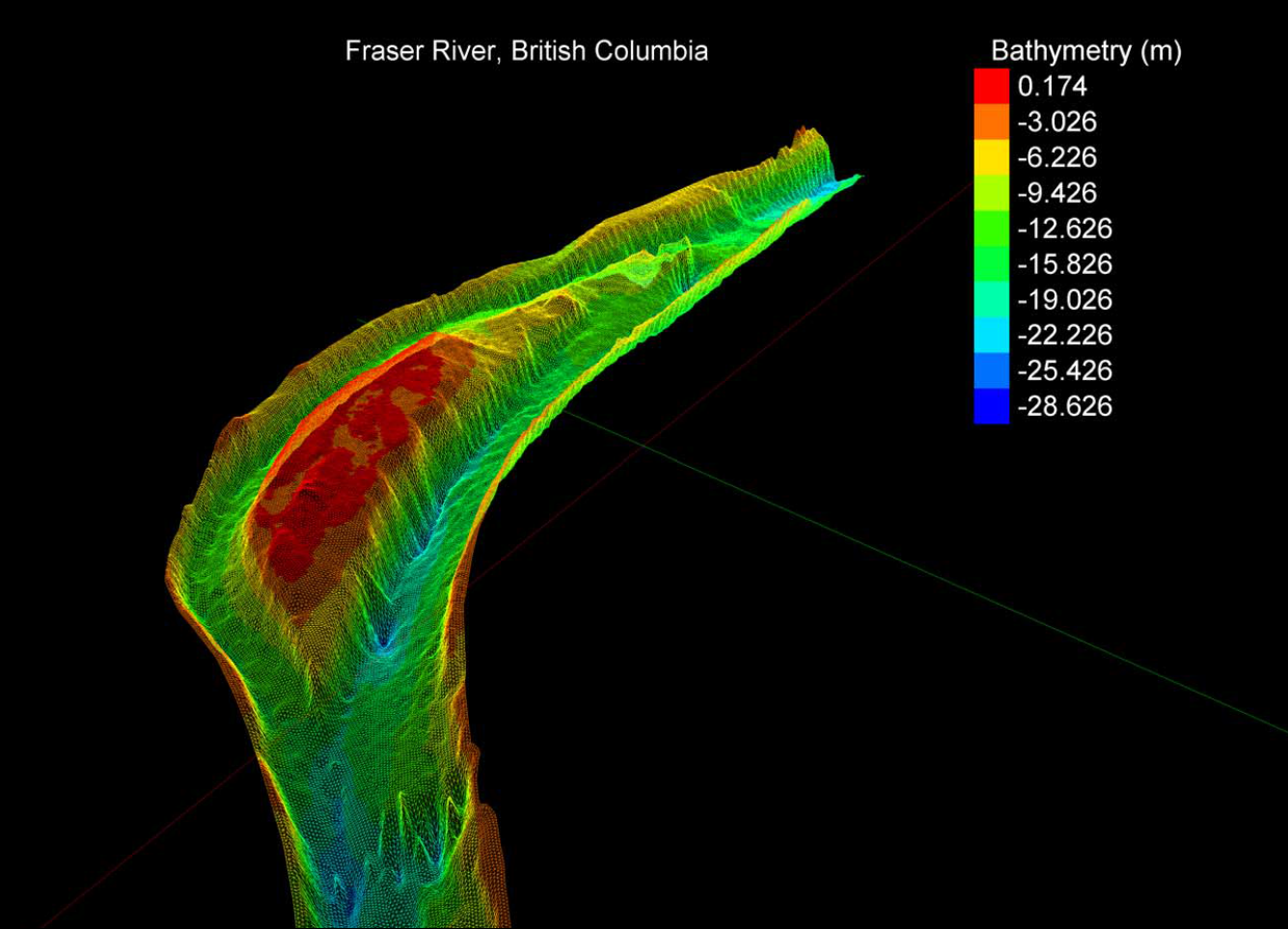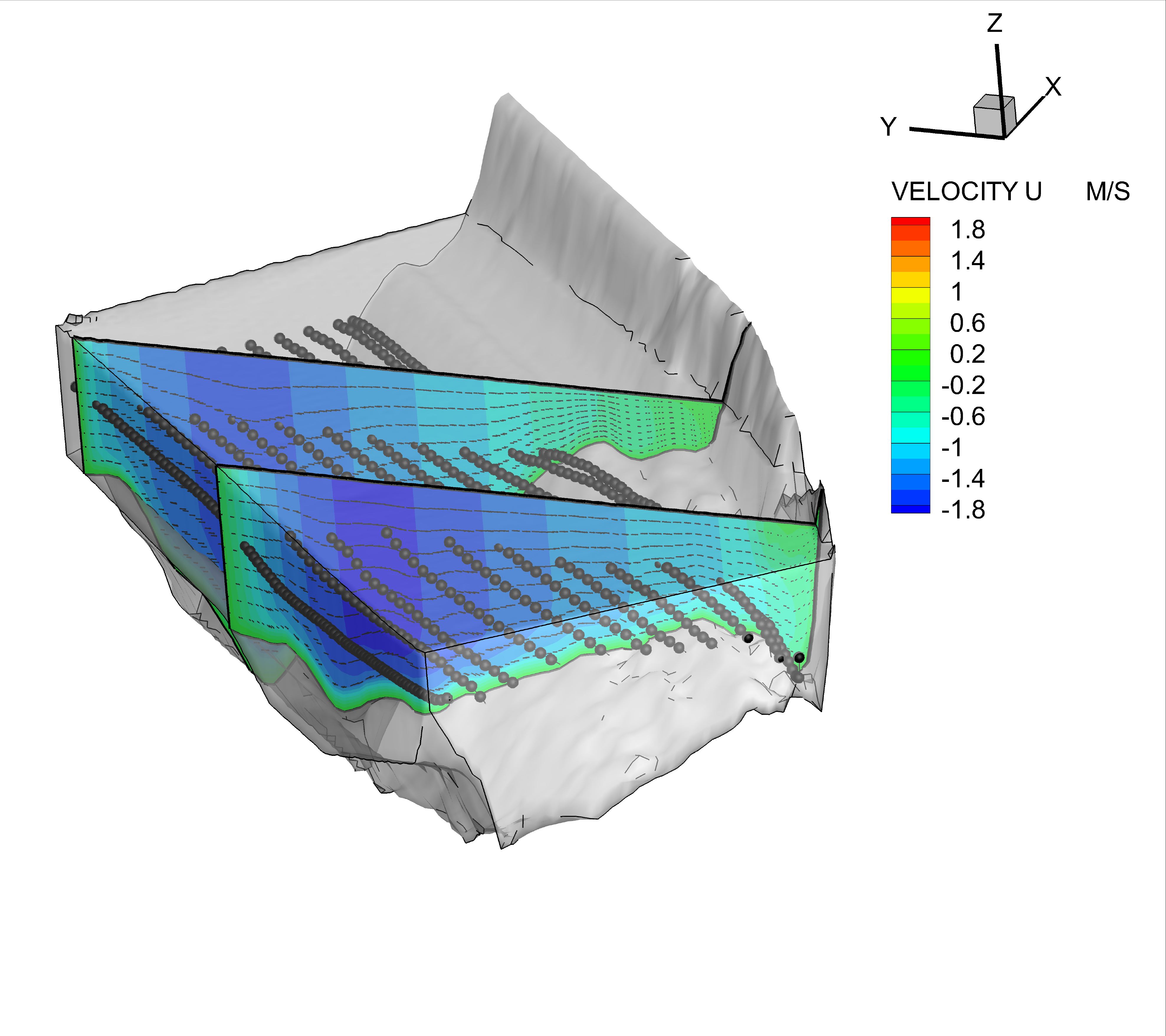
Research group of Dr. Arturo S. Leon
| |
| Welcome |
| People |
| Research |
| Teaching |
| Publications |
| Codes/softwares |
| Projects |
| Our work in the news |
| Experimental Facilities |
![]()
Applicability of Two-Dimensional Flow Modeling in the Construction of Hydraulic Performance Graphs for Unsteady Flow Routing in Complex Looped Networks
E-mail: cgiffordmiears@gmail.com
Phone: (530) 588-5771
Project: Applicability of Two-Dimensional Flow Modeling in the Construction of Hydraulic Performance Graphs for Unsteady Flow Routing in Complex Looped Networks (September 2011-December 2013)
Description: Expand the theory of Gonzalez-Castro and Arturo Leon in Hydraulic Performance Graphs and their use in unsteady flow routing to include two-dimensional modeling. The two-dimensional model chosen for this project is Telemac-2D from the TELEMAC Hydrodynamics suite. Telemac-2D solves the depth-averaged shallow water equations using an unstructured, triangular element finite element grid to solve complex hydraulic problems.
Abstract: The performance graph (PG) approach has been shown to be accurate, numerically efficient, and robust for unsteady flow routing of near one-dimensional flows. This paper explores the use of a depth averaged two-dimensional (2D) hydrodynamic model for the construction of PGs for unsteady flow routing around an island that presents complex flow features. The Hydraulic Performance Graph (HPG) of a channel reach graphically summarizes the dynamic relation between the flow through and the stages at the ends of a reach under gradually varied flow (GVF) conditions, while the Volumetric Performance Graph (VPG) summarizes the corresponding storage. The hydraulic routing for the entire system consists of dividing the river system into reaches and pre-computing the hydraulics for each of these reaches independently using a steady flow model. Then, a non-linear system of equations is solved that is assembled based on information summarized in the systems' performance graphs, the reach-wise equation of conservation of mass, continuity and water stage compatibility conditions at the union of reaches (nodes), and the system boundary conditions. The two-dimensional PGs are built using TELEMAC-2D, an open source depth averaged two-dimensional hydrodynamics model. An application to a section of the Fraser River in British Columbia is presented. Results of this study show that two-dimensional GVF models can be used to generate the PGs for routing unsteady flows in non-uniform, complex geometric channels.
Advisor: Dr. Arturo S. Leon
Funding Agency: Bonneville Power Administration (US Department of Energy)

The figure above depicts the Fraser River TELEMAC-2D FE bathymetric mesh.
![]()

Performance Graphs can be generated using any CFD model. Above is an example simulation utilizing the 3D hydrodynamics model, TELEMAC-3D.
Upcoming Conferences in Hydraulic Engineering and Water Management